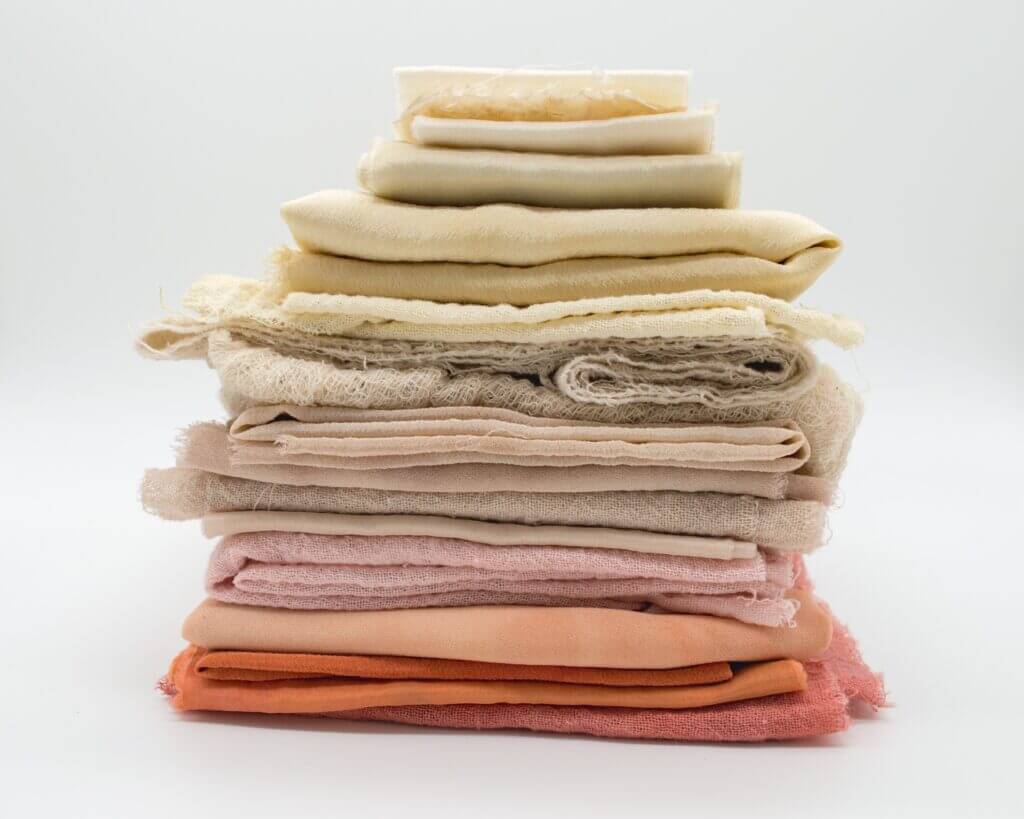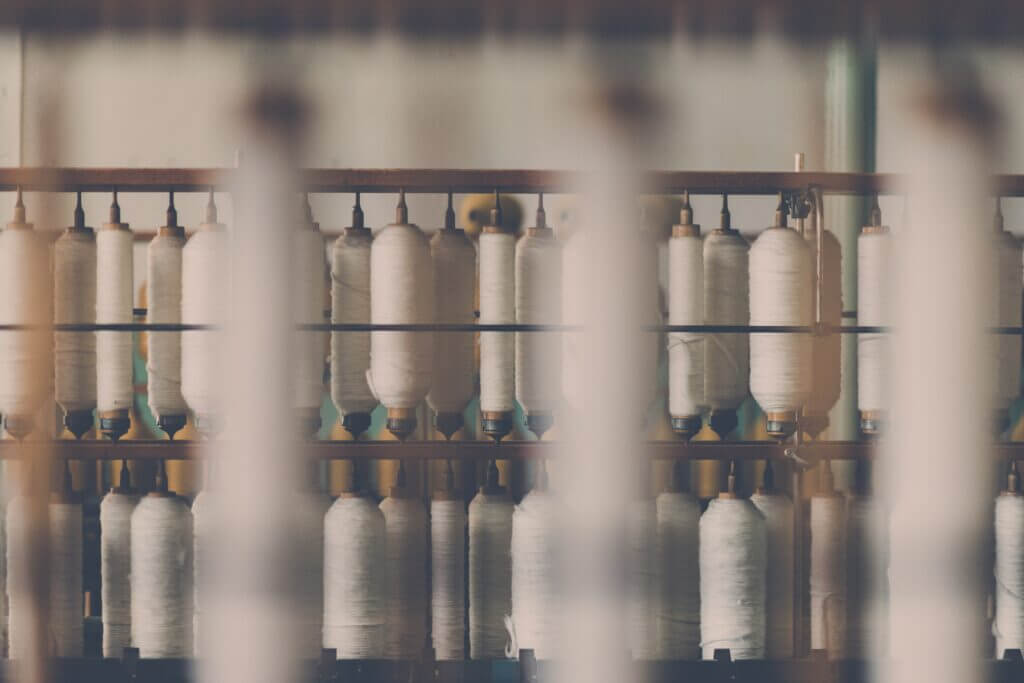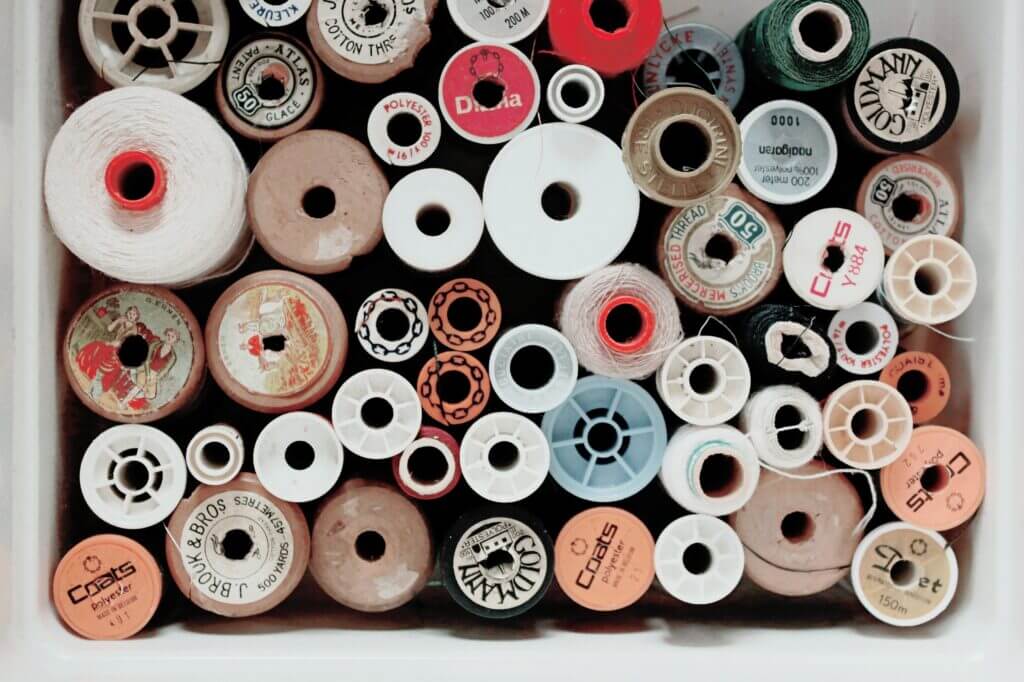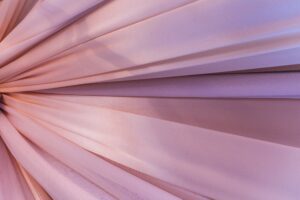Embark on an explorative journey through the modal fabric, a textile that seamlessly blends comfort, style, and sustainability. This semi-synthetic, bio-based material hailing from the cellulose of beech trees has carved out a niche in the textile industry with its unique blend of rayon’s coveted traits and cotton’s unrivalled breathability. However, the narrative of modal fabric isn’t just about comfort and aesthetics; it’s also a tale of environmental considerations, production challenges, and intriguing historical roots.
Unveiling Modal Fabric
Modal fabric, a semi-synthetic and bio-based textile, offers a comforting experience under the harsh sun. Derived from the cellulose of beech trees, it combines the qualities of rayon with breathability that matches cotton, making it a popular choice for summer use.
Beyond clothing, it finds use in various household items, reflecting its rising popularity. It is a high wet modulus rayon, outperforming standard viscose in strength, breathability, and eco-friendliness. It’s extensively utilized in activewear, pyjamas, undergarments, bed sheets, and bath towels, courtesy of its soft, breathable nature.
Originally designed for industrial applications, modal fabric transitioned into a wear-resistant, fade-resistant, breathable, and soft material suitable for clothing, furnishings, bedding, and more as research evolved. Known as an eco-fabric, it’s considered a second-generation viscose rayon fibre, becoming a favourite in sportswear. Despite its higher cost than traditional materials like viscose and cotton, many clothing brands also recognise it as a sustainable luxury textile.
Born in Japan in 1951, modal fabric production has been dominated by the Austrian company Lenzing Fibers since 1964. They revolutionized the bleaching process of wood pulp, promoting eco-friendliness, enhancing their reputation, and fuelling the global demand for their fabric.
The sustainability of modal fabric is intricate. Despite being derived from natural resources and fully biodegradable, its production requires a chemical-intensive process, posing environmental and worker safety concerns. Thus, the sustainability of modal fabric lies in balancing its natural roots with mindful production practices.

Modal fabric, praised for its comfort and breathability, also grapples with issues related to allergic reactions, durability, sustainability, and environmental impact. This unique material indeed presents a compelling blend of pros and cons.
Pros:
Eco-Friendly Efficiency
A notable advantage of modal fabric lies in its eco-friendliness and efficient yield. Specifically, the beech trees used in producing Lenzing modal fabric, cultivated using sustainable practices, offer a fibre yield per acre ten times higher than typical cotton. Furthermore, these trees require significantly less water, as cotton production demands up to 20 times more water for a comparable yield.
Moreover, the modal fabric is an environmentally friendly alternative to other rayon fibres, such as viscose, due to its lower chemical usage and origin from regenerative plants. When manufactured with environmental consciousness, the extraction process of cellulose fibres for modal fabric leads to lesser toxic waste, underlining its position as a more sustaiModal fabric option.
Water-Wise and Biodegradable
Modal fabric presents an array of benefits that contribute to its eco-friendly credentials. Notably, this fabric significantly reduces water usage throughout its lifecycle. For instance, in its everyday application, Modal does not require whitening agents or fabric softeners during laundry, and it’s well-suited to shorter washing cycles. Consequently, households can save water and energy whenever they launder modal-based clothing.
Modal fabric is highly water-absorbent. This quality makes it an excellent choice for activewear and underwear. It also promotes colourfastness in dyed garments. This is due to its exceptional dye-absorbing ability. Modal fabric is also biodegradable. It can decompose, reducing landfill pollution. This enhances its environmental sustainability.
Silky Softness and Comfort
Exuding a silky smooth texture, the modal fabric is renowned for its softness that rivals even the finest satin or silk sheets, offering unparalleled comfort in the textile world. Its distinctive smoothness and natural softness make wearing modal-based garments an exquisite experience, enhancing comfort across various conditions. Gentle washing and mild detergents are recommended to maintain their delicate nature, avoiding the scratchiness often associated with wool or certain cotton types.
In addition, modal fabric boasts breathability and stretchiness, further elevating its appeal. The fabric has a gentle touch as it is breathable and stretchable. These qualities make clothing made from modal kind to the skin. This makes it an excellent choice for everyday attire and sportswear. These notable characteristics set this fabric apart in textiles.
Exceptional Absorbency and Breathability
Among the many advantages of modal fabric, its exceptional absorbency stands out. Modal can increase the absorption rate by up to 50% by outperforming the traditionally preferred cotton. This means less discomfort from clammy clothing after a day of sweat-inducing activities, ensuring dryness and comfort. This attribute mainly benefits active children, keeping them more at ease during play. Originating from beechwood pulp, the modal fabric also brings inherent breathability, adding to its impressive list of benefits and making it an ideal choice for outdoor apparel and activities.
Transformative Properties and Versatility
Modal fabric transforms other materials into unique properties, often blended with textiles. This semi-synthetic fibre is ideal for hygiene-related products and medical items, thanks to its high absorbency rate, further enhancing its functionality. A blend with cotton capitalizes on the Modal’s resonance to shrinkage, imbuing the resulting material with added strength. Furthermore, modal fabric fortifies its stretchable attributes when paired with lycra or spandex, offering superior flexibility and resilience. These composite fabrics harness the benefits of Modal, contributing to a range of durable and high-performing products.
Wrinkle Management and Care
While boasting many advantageous properties, the modal fabric can occasionally wrinkle excessively post-wash, even with careful hand-cleaning. The nature of its weave and construction can lead to bunching, leaving behind creases. However, this issue can be mitigated with careful ironing. IrModal on the reverse side of the material is recommended to prevent unnecessary shining, taking extra care to avoid scorching the fibres. Placing a cloth between the modal fabric and the iron can prevent damage. Users should note that it cannot be restored once the Modal is scorched from excess heat, underscoring the importance of cautious maintenance.
Vibrant Colors and Excellent Dyeing
Modal fabric’s properties extend to its superior dyeing abilities. Its natural absorbency facilitates excellent dye uptake, creating vibrant colours that hold steadfastly without significant bleeding. Whether woven or knit, modal fabric drapes well and exhibits a smooth, lustrous finish. Despite its exceptional colour retention, washing modal fabric items with similar colours is advisable. This is not due to its propensity to bleed but its capacity to absorb other colours. Its high absorbency could cause it to pick up dyes released by other items during the washing cycle. Thus, care should be taken during laundry procedures.
Competitive Pricing
While the allure of Modal fabric and its MicroModal variant is undeniable, it’s important to take note of their financial implications. Despite a cost-effective production process, the price point for the consumer tends to exceed that of cotton and viscose alternatives. Whether looking to create a jersey or seeking near-100% Modal textiles, the price per yard ranges from $11.99 for MicroModal to $19.99 for more concentrated Modal products. This competitiveness in pricing may deter those seeking an economical solution for their summer wardrobe. The complexity of Modal’s production, combined with a high energy consumption compared to other natural fibers, firmly plants it on the pricier side of the fabric spectrum.
Exceptional Stability and Durability
Modal fabric stands out due to its exceptional stability. While it may not rival the durability of materials such as rip-stop nylon, it certainly provides robust resistance to the wear and tear of an active lifestyle. Impressively resilient, modal fabric maintains its vibrancy of prints and colours longer than fabrics like cotton. One key advantage of modal fabric is its resistance to shrinkage, even when subjected to machine washing, enabling it to retain its shape over time. It further excels in resisting piling and withstands pressure remarkably well. Another noteworthy feature of this rayon variant is its resistance to pill formation, promoting a smooth, wrinkle-free finish. Therefore, despite its similarity to other materials, the blend composition and care instructions must be assessed to appreciate modal fabric’s distinct benefits fully.

Cons:
Allergic Reactions and Sensitivities
Modal fabric has been linked to a higher rate of allergic reactions than other textiles. These reactions can range from common symptoms such as itching, redness, and rashes to rare but severe issues like skin blistering, headaches, swollen glands, and disorientation. These symptoms are often experienced by individuals when they come into contact with modal fabric for the first time. As a precaution, those with existing allergies to trees, pollen, or sap may want to consider avoiding modal fabric until they can confirm it will not trigger a similar reaction. Therefore, despite its many benefits, potential allergies should be considered when evaluating the use of modal fabric.
Durability Concerns
Despite the many advantages of modal fabric, its durability leaves something to be desired compared to other materials. It is susceptible to problems such as pilling and stretching, which can alter the structure and appearance of the fabric. Careful handling is required during washing to prevent these issues, with hand washing often recommended. Additionally, the fabric’s propensity to snag on sharp objects like fingernails or doorknobs can lead to runs in the material. As a result, the modal fabric is frequently used for less exposed items such as underwear and pyjamas, where these durability concerns are less problematic.
Sustainability Caveats
Despite its sustainable potential, the modal fabric does not always guarantee eco-friendly practices. Lenzing, a significant producer, strives to create a carbon-neutral process utilizing sustainably grown beech trees. However, lower-cost modal items often originate from countries such as China, using wood pulp imported from Indonesia, with no transparent documentation of their harvesting methods. Consequently, without clear labelling indicating Austrian origin, the product’s sustainability remains uncertain.
Furthermore, some manufacturers have faced accusations from the Rainforest Action Network of contributing to forest destruction to produce this textile. Certain supplies reportedly stem from plantations established in clear-cut areas, replacing diverse forests with mono-crop timber plantations. This practice undermines the otherwise eco-friendly potential of modal fabric, reminding consumers of the importance of sourcing and manufacturing transparency.
Maintenance Challenges
The modal fabric carries specific care requirements that may exceed those of other rayon textiles. For items not entirely pure beechwood fibres, dry cleaning may be necessary to preserve the fabric’s unique qualities. Chlorine bleach should be avoided as it weakens the material’s fibres; oxygen-based cleaners are recommended. Although pure Modal can withstand a dryer cycle on a low heat setting, hanging the garment to the Modal is advisable. Such specific care requirements can add extra complexity to garment maintenance.
Limited Heat Retention
Modal fabric’s cooling qualities make it a delightful choice during warmer seasons, but this feature detracts from its functionality in colder climates. The textile doesn’t retain body heat effectively, leaving wearers chilled in colder weather. This makes the Modal less suitable for bracing the chill of a gusty autumn day or navigating a sModaltrek to school or work. Thus, while modal fabric’s characteristics can be advantageous during vigorous workouts or scorching summer days, its lack of heat retention could pose a drawback during colder months.
Discolouration and Heat Sensitivity
Despite its many admirable attributes, the modal fabric turns yellow when subjected to high temperatures. Regardless of its initial dye colour, this plant-based synthetic textile can undergo discolouration with excessive heat exposure. Unfortunately, the yellowing is often irreversible, rendering a garment unsalvageable once scorched. Therefore, adhering to the care instructions on the label is paramount, safeguarding the garment from heat damage. This peculiarity underscores the need for meticulous handling of modal fabric, posing a challenge for users unfamiliar with such precise care.
Environmental Impact
The production process of modal fabric, a type of rayon, is a matter of environmental concern. To manufacture this textile, cellulose from wood is dissolved in caustic soda, compressed to remove excess liquid, and then subjected to a series of steps, including ripening, filtering, and degassing. This is followed by immersion in sulfuric acid to form rayon filaments. The production process involves using carbon disulfide, a neurotoxin that can pose health risks and contaminate the environment through air and water. Despite the fabric’s biodegradable nature, it decomposes slower than some other textiles due to its water-repellent property. Rayon fibres account for approximately 60% of fibre contamination in deep ocean areas. This intensive, chemical-laden process casts a shadow over the otherwise appealing aspects of the modal fabric.
Mislabeling Issues
Issues of mislabeling represent another concern associated with modal fabric. Several companies have been reported for misleading customers by incorrectly labelling their products as being derived from natural materials rather than through the traditional rayon process. The Federal Trade Commission in the United States took action against this practice, sending letters to over 100 companies. This was a move to address the accusation that retailers were manipulating customers seeking to make environmentally conscious purchases. The consequences were quite significant, with four large retailers incurring penalties of $1.3 million. A similar scenario unfolded in Canada, demonstrating the seriousness of misrepresentation in the textile industry and highlighting the need for vigilant consumer awareness when purchasing products labelled as modal fabric.
Forest Destruction
Forest destruction presents a significant concern tied to the production of modal fabric. Often, there is no assurance that the pulp used for creating modal textiles comes from renewable forests. This caveat applies unless Lenzing, a company known for its commitment to sustainable practices, produces the modal fabric. Consequently, the production of modal fabric can contribute to the detrimental deforestation of our planet, further straining our already fragile ecosystems. This lack of sustainability in sourcing modal pulp adds a considerable con to using this material, particularly for those consumers dedicated to environmentally responsible practices.

Frequently Asked Questions About Modal Fabric
What is a modal made of?
Manufacturers derive Modal fabric, a semi-synthetic textile, from plant-based sources, earning it a reputation for surpassing cotton in softness and strength. The primary source of its pulp-based cellulose fibres is the European Schneider Zelkova species of beech trees, which are used to craft the fabric. Notably, the creation and maintenance of this fabric involve a significantly lower water consumption rate than cotton, adding an environmentally friendly touch to its appeal. With its unique combination of comfort, durability, and eco-conscious production, this fabric is a compelling alternative to traditional textiles.
What is a micro modal?
Micro Modal, developed by Lenzing, is a refined version of modal rayon, celebrated for its exceptionally lightweight, fine knit, and ultra-soft fabric. This advanced textile has a higher price point than its counterpart, reflecting its enhanced characteristics. Micro Modal’s distinctive softness and comfort make it a favoured choice in producing underwear and sportswear, where the demand for superior quality and feel against the skin is paramount. Its unique properties align well with the requirements of adventurous outdoor pursuits, where comfort, fit, and durability are essential.
How To Wash And Clean Modal Fabric?
To maintain the quality of the modal fabric, follow these straightforward and user-friendly steps. You can wash this fabric at any temperature, which adds versatility to your laundry routine. However, avoid using chlorine-based bleaches, as these harsh chemicals can damage the vibrant colours of the garment and compromise its strength. Instead, use oxygen-based bleaches. These provide a safer and equally effective cleaning solution. After washing, dry the garments at low to medium temperatures to protect their texture and longevity. Adhering to these guidelines ensures that modal fabric’s distinctive softness and resilience remains intact, offering a comfortable and durable experience for any outdoor adventure.
Does Modal Fabric Shrink?
While modal fabric shares similarities with other rayon-based textiles, such as cotton, it defies expectations regarding shrinkage. Many might think this fabric is prone to shrinkage. However, this fabric is resistant to this common issue. Its low surface friction and robust fibres contribute to this property. Modal fabric is approximately 50% less likely to shrink. This resilience makes it reliable for outdoor and adventure wear. It can withstand various environmental and laundering conditions. It doesn’t compromise its size or fit.
Is Modal Fabric Toxic?
Despite its origins in natural resources, the production process of modal fabric, like other rayon-based textiles, does involve chemicals, introducing a degree of toxicity. Yet, it’s noteworthy that the Modal’s toxicity level is substantially lower than that of other rayon fibres. However, it’s essential to consider environmental impacts beyond chemical use; modal production can contribute to deforestation. Among rayon-based fabrics, Lyocell emerges as the most eco-friendly option, providing a balance of comfort and environmental consideration for the conscientious adventurer.
Is Modal Fabric Breathable?
Indeed, modal fabric’s breathability is one of its most appreciated characteristics. Its foundation in beech wood pulp endows it with a natural structure that facilitates ample air circulation. As a result, garments crafted from this fabric offer a comfortable wearing experience, even on the warmest summer days. This fabric does not trap sweat, making it an optimal choice for outdoor activities and adventure pursuits where keeping cool is crucial. The breathability of modal fabric underscores its appeal as a fabric that combines comfort, durability, and practicality.
Can You Dye Modal Fabric?
Modal fabric’s high absorbency allows easy and effective dyeing, making it a versatile textile for varied aesthetic preferences. This fabric’s property to quickly and effectively absorb any liquid it contacts aids in the dyeing process. Before dyeing, garments should be thoroughly washed with detergent to ensure optimal dye uptake. Following this, a reactive dye applied in lukewarm water effectively imparts colour to the fabric. Therefore, the modal fabric offers functional advantages like strength and breathability and allows for customization, adding to its appeal in outdoor and adventure wear.
Is Modal Fabric Stretchy?
Indeed, the impressive stretchiness of modal fabric makes it highly suitable for active pursuits. This quality makes it a top choice for activewear and t-shirts. It offers a form-fitting style and allows for unhindered movement. Its high flexibility and comfort cater to all body types. This makes it an adaptable and accommodating textile. Whether you want to accentuate curves or need free, unobstructed movement, the modal fabric is up to the task. Its inherent stretchability meets a wide range of garment requirements. It aligns with the varied demands of outdoor and adventure enthusiasts.


